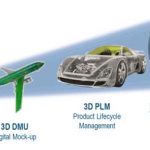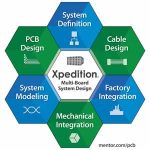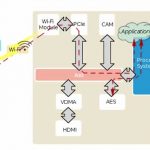OpenCL brings algorithm development into a unified programming model regardless of the core, working across CPUs, GPUs, DSPs, and even FPGAs. Intel has been pushing OpenCL programming for some time, particularly at the high end with “Knights Landing” processors. Where other vendors are focused on straight-up C high-level … Read More
Author: Don Dingee
OpenCL hits FPGA-based prototyping modules
FPGAs allow customization of SEU mitigation
Teams working on avionics, space-based electronics, weapons delivery systems, nuclear generating plants, medical imaging equipment, and other applications where radiation leads to single-event upsets (SEU) are already sensitive to functional safety requirements. What about automotive applications?
With electronic… Read More
One chip and the MCU variant challenge disappears
Merchant microcontrollers are usually made available in a wide range of variants based on one architecture with different peripheral payloads and packaging options. A couple of companies, notably Cypress with their PSoC families and Silicon Labs with the EFM8 Laser Bee… Read More
Protium for the win in software development
Cadence Design Systems is a long-standing provider in hardware emulation, but a relative newcomer to FPGA-based prototyping. In an upcoming lunch and learn session on November 11 in San Jose, Cadence teams will be outlining their productivity strategy. What’s different with their approach and why is this worth a lunch?… Read More
Behind the 3DEXPERIENCE for Silicon
We’ve been covering the Dassault Systèmes “Silicon Thinking” platform for a while here, but, as I’m often prone to do, I wanted to explore the backstory to uncover more about the concept. With over 25M users of their product lifecycle management (PLM) solutions, why is Dassault Systèmes becoming so interested in semiconductor… Read More
Can one flow bring four domains together?
IoT edge device design means four domains – MEMS, analog, digital, and RF – not only work together, but often live on the same die (or substrate in a 2.5D process) and are optimized for power and size. Getting these domains to work together effective calls for an enhanced flow.
Historically, these domains have not played together … Read More
Automation for managed system-of-systems design
Anybody who has done any bus & board system design knows the problem. Merchant boards typically have standardized pinouts (after years of haggling in standards organizations) for the backplane bus, and a group of user-defined pins for daughtercard I/O. Homegrown systems usually have a just-as-carefully defined proprietary… Read More
FPGAs for a few thousand devices more
An incredibly pervasive trend at last year’s ARM TechCon was the IoT, and I expect this year to bring even more of the same, but with a twist. Where last year was mostly focused on ultra-low power edge devices and the mbed ecosystem, this year is likely to show a better balance of ideas across all three IoT tiers. I also expect a slew of … Read More
S2C adds support for Juno ARM dev platform
We’ve had several blogs introducing the Juno ARM Development Platform as a vehicle for ARMv8-A software development. S2C has jumped in with a module connecting their FPGA-based prototyping platform to the Juno, enabling more advanced IP… Read More
There is more than C to worry about
We periodically see that “software ate the world” line – I’m pretty sure I’ve used it a couple times myself. The fact is, software doesn’t run itself; never has, never will. Somewhere there has to be an underlying computer. First it was on beads, then in gears, then in tubes.… Read More














Jensen Huang Drops Donald Trump Truth Bomb on Joe Rogan Podcast